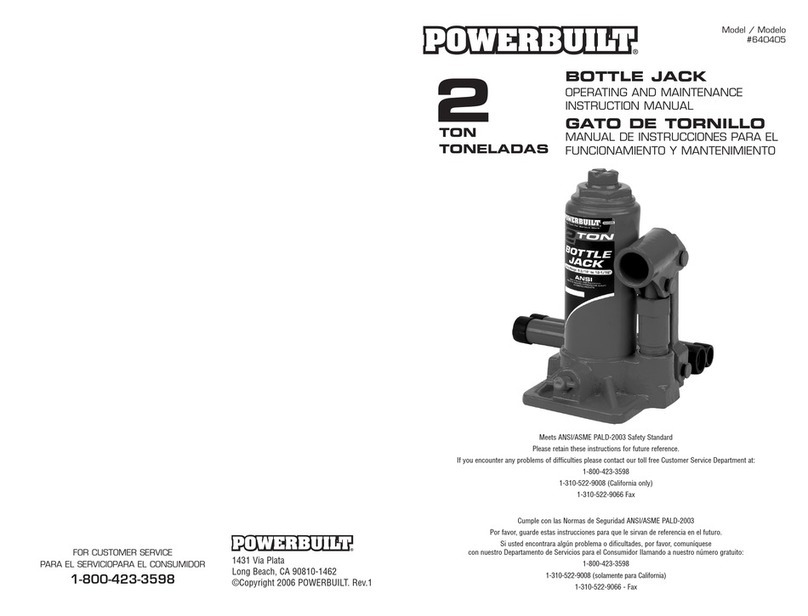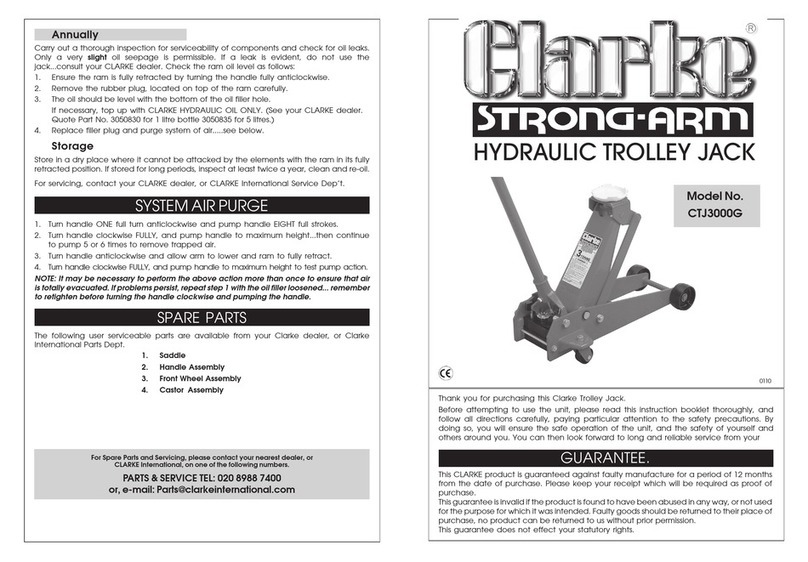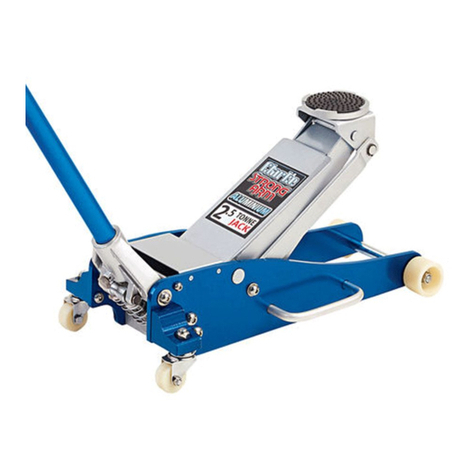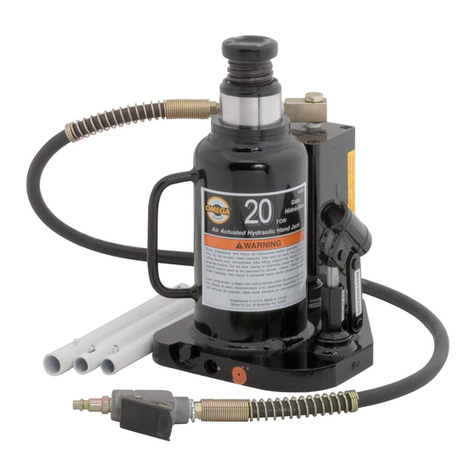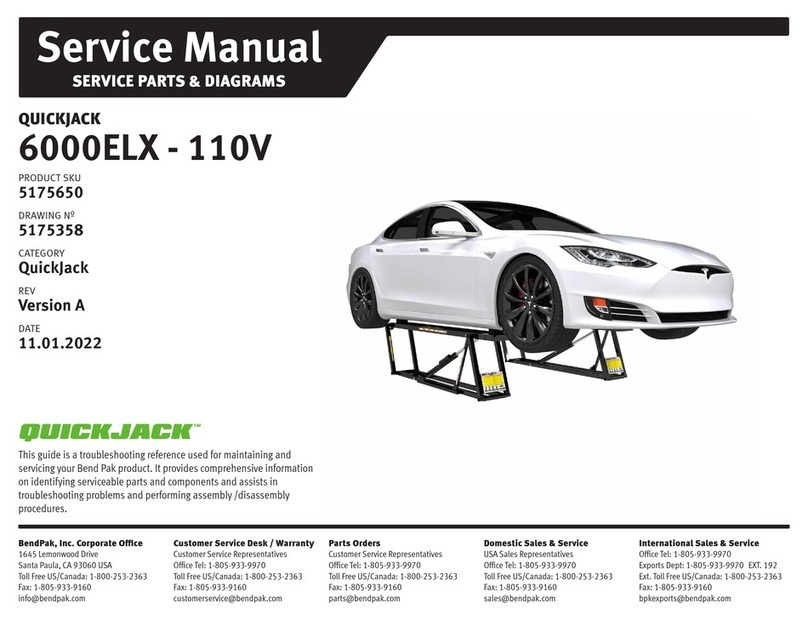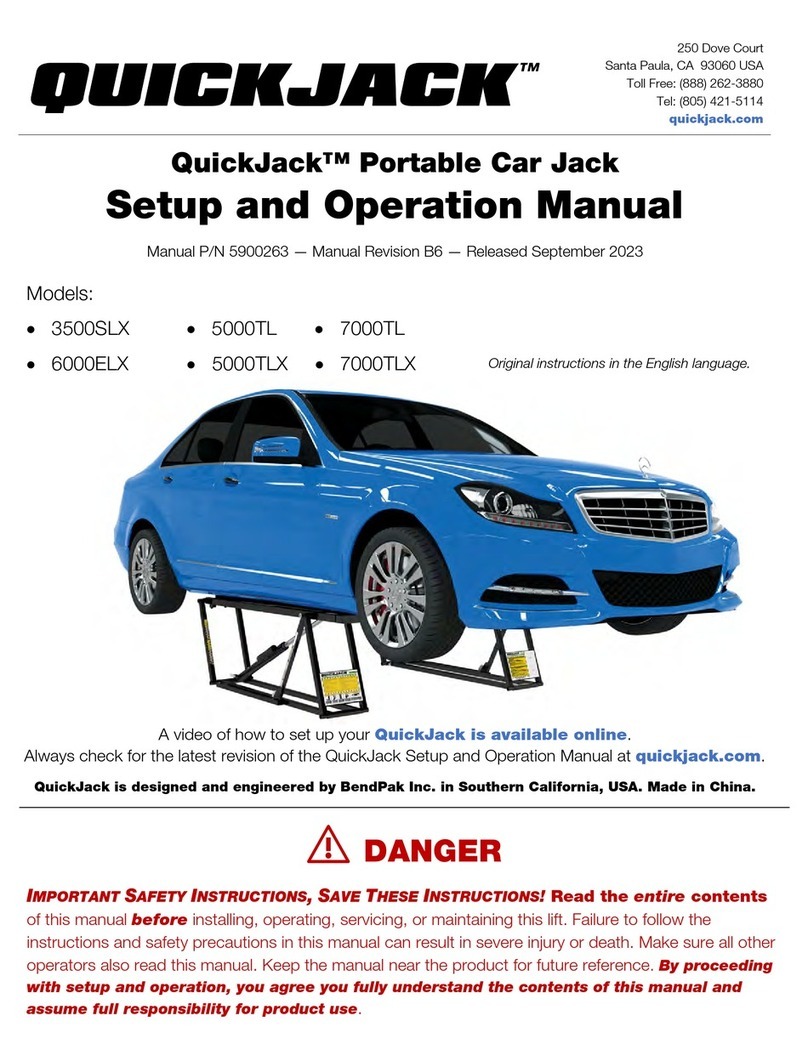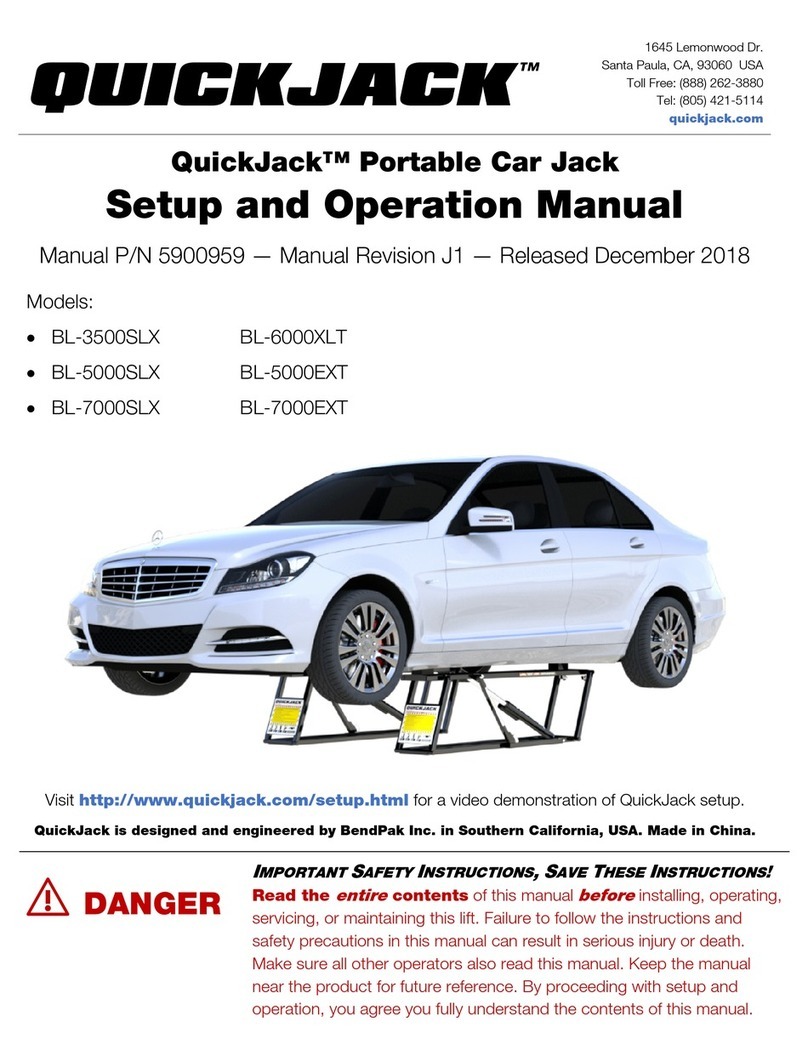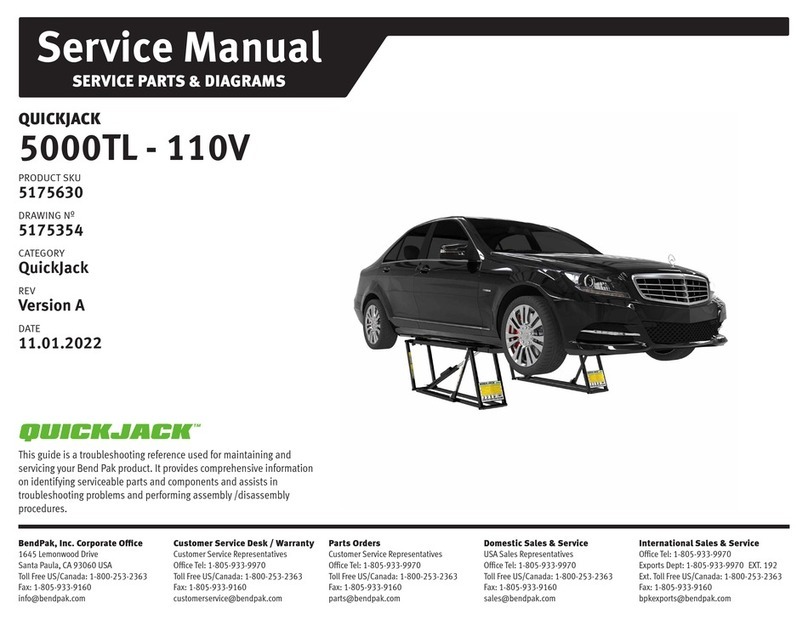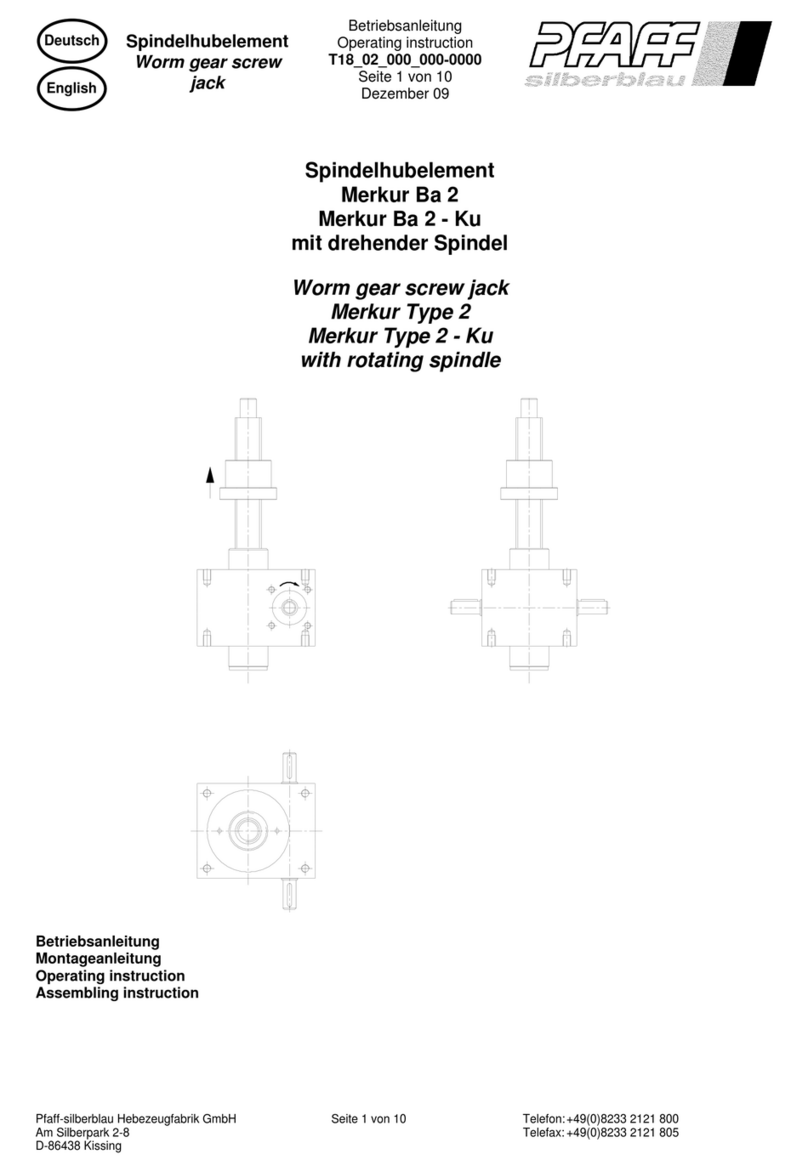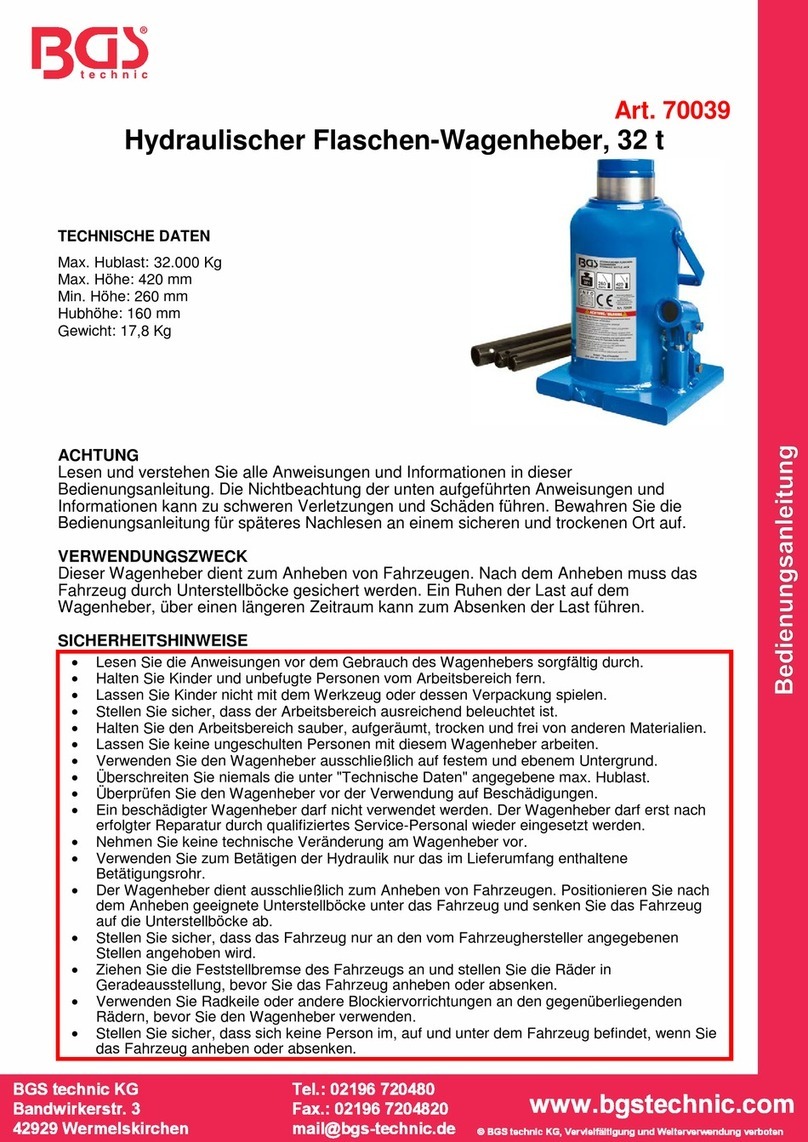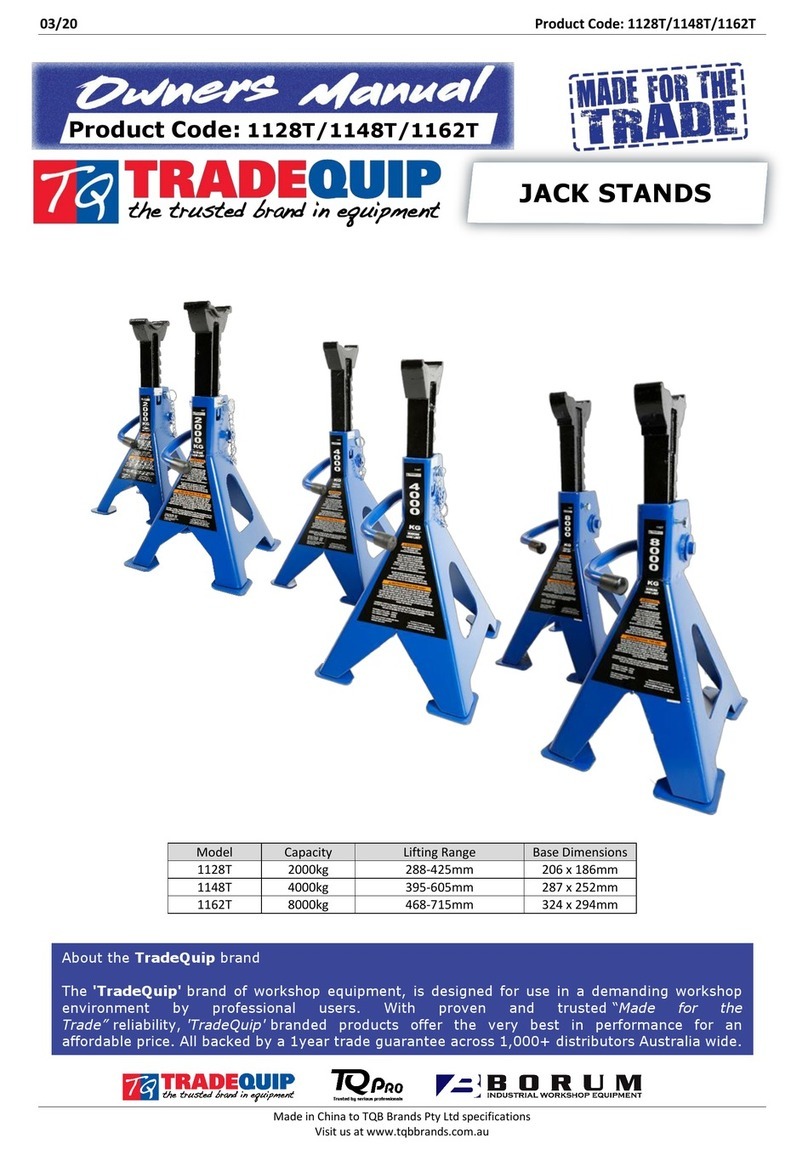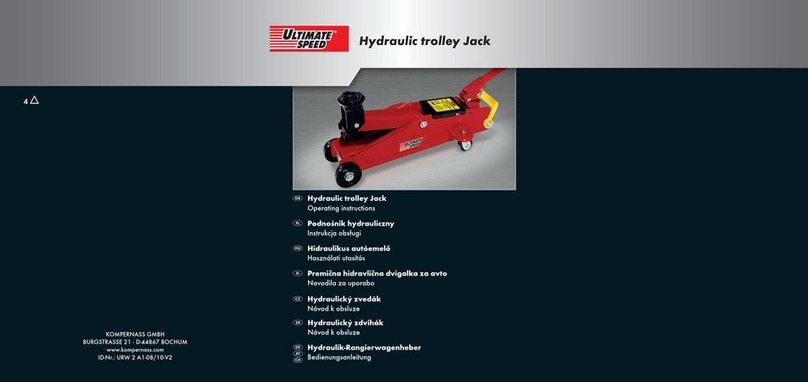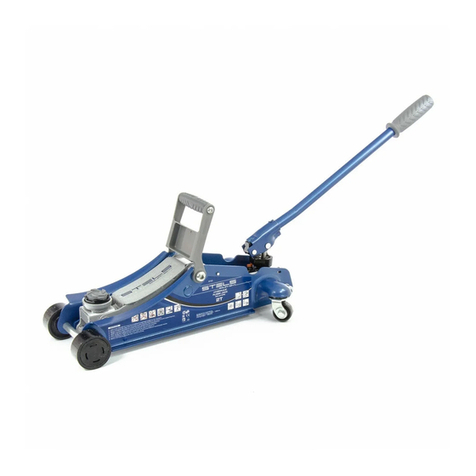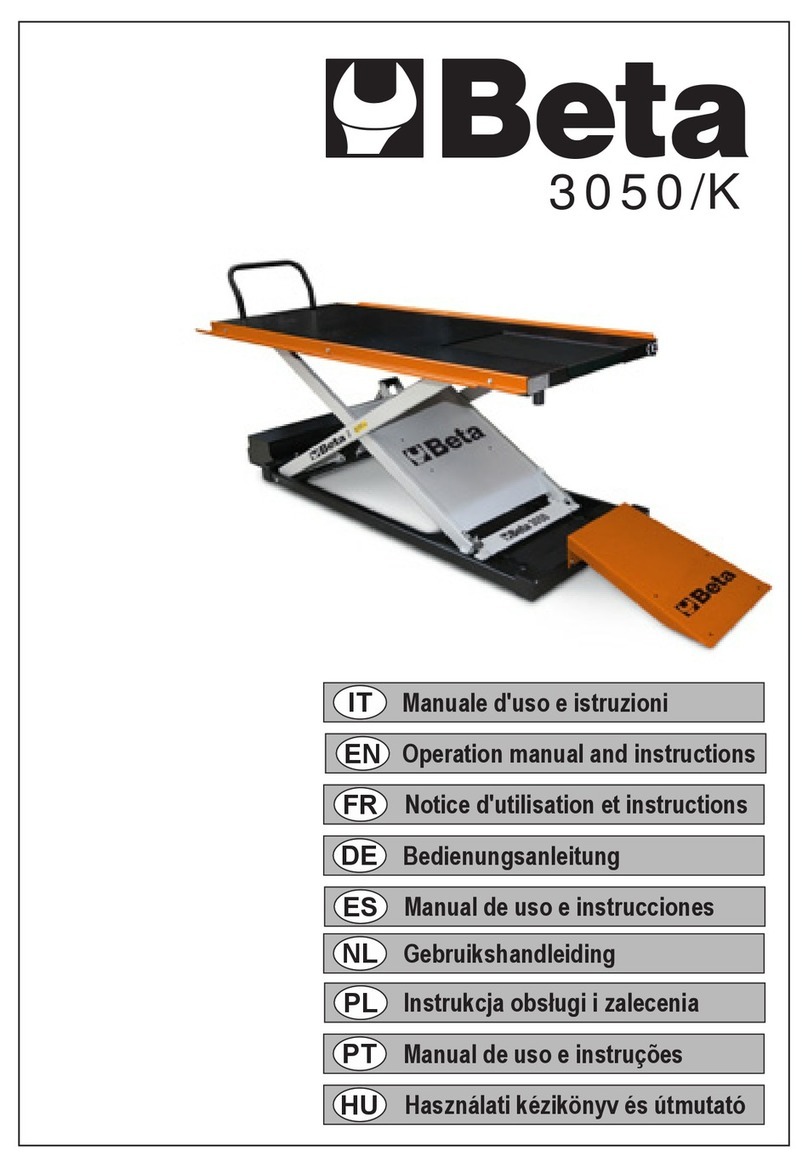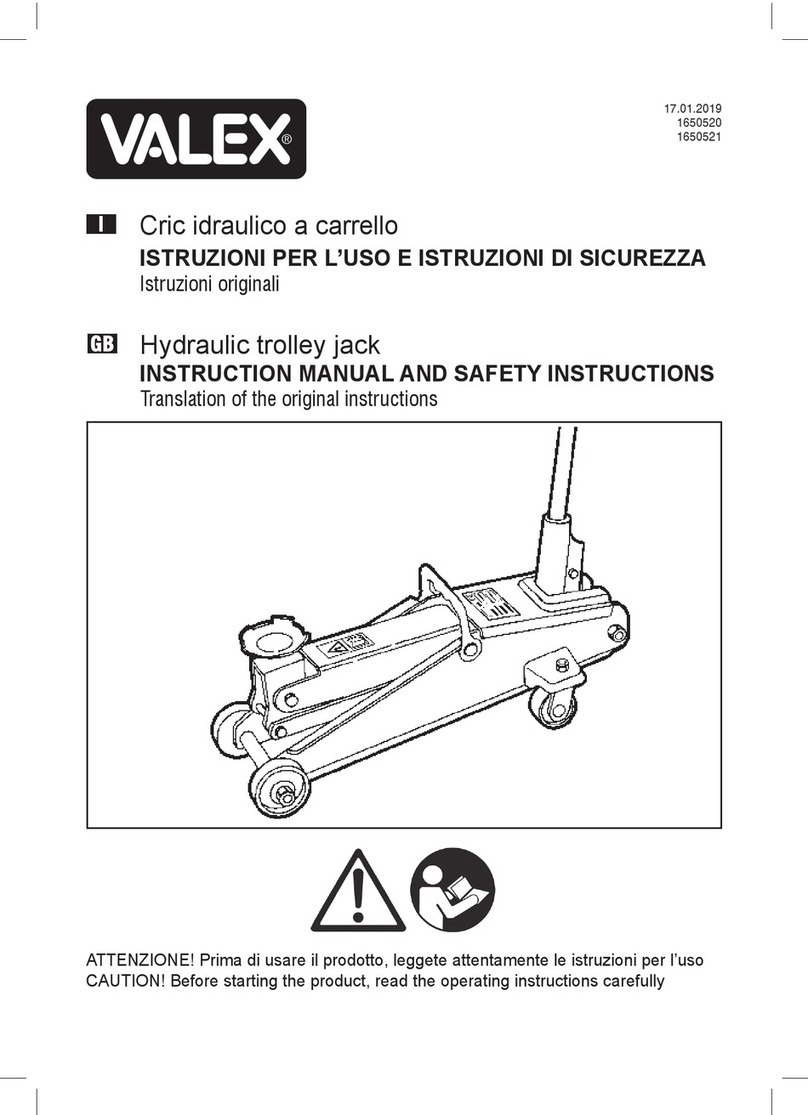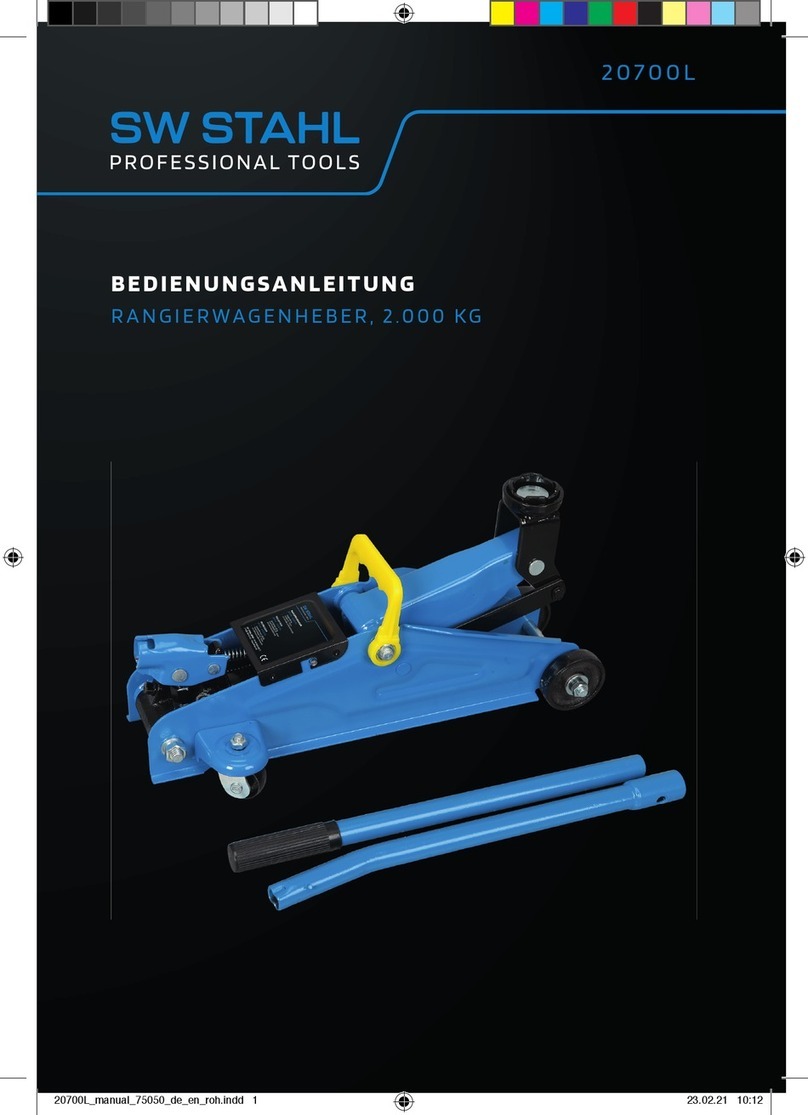
QuickJack™ Portable Car Jack 6P/N 5900263 — Rev. B1 — September 2021
6. Always unplug equipment from electrical outlet when not in use. Never use the cord to pull the plug
from the outlet. Grasp plug and pull to disconnect.
7. Let equipment cool completely before putting away. Loop cord loosely around equipment when
storing.
8. To reduce the risk of fire, do not operate equipment in the vicinity of open containers of flammable
liquids (gasoline).
9. Adequate ventilation should be provided when working on operating internal combustion engines.
10. Keep hair, loose clothing, fingers, and all parts of your body away from moving parts.
11. To reduce the risk of electric shock, do not use on wet surfaces or expose to rain.
12. Use only as described in this manual. Use only manufacturer’s recommended attachments.
13. Always wear safety glasses. Everyday glasses only have impact resistant lenses, they are not
safety glasses.
14. To reduce the risk of injury, close supervision is necessary when this product will be used around
children.
15. To reduce the risk of injury, never overload the drawers or shelves. Refer to loading instructions.
16. To reduce the risk of electric shock or fire, never overload receptacles. Refer to markings for the
proper load on receptacles.
Save these instructions!
QuickJack Safety Information
Please note the following:
•The product is a portable car jack. Use it only for its intended purpose.
•Read this manual thoroughly before installing, operating, servicing, or maintaining your QuickJack.
•The product should only be operated by authorized personnel.
•Do not make any modifications to the product.
•
QuickJack is approved for indoor installation and use only
. Outdoor installation is
prohibited. Your QuickJack is portable, however, so if you end up taking it outdoors, remember to
protect it from the weather (for example, from falling dirt, rain, sleet, and snow).
•Never exceed the rated capacity of the jack.
•Make sure all operators read and understand this Setup and Operation Manual. Keep the manual
near the device at all times.
•Do not use the product while tired or under the influence of drugs, alcohol, or medication.
•Make a visual inspection of the product before using it
each time
. Check for damage or missing
parts. Do not use the product if you find any of these issues. Instead, stop using it, then contact
QuickJack at quickjack.com/support or support@quickjack.com.
•Make a
thorough
inspection of the product at least once a year. Replace any damaged or
severely worn electrical cables, Hydraulic Hoses, decals, or warning labels. Do not use the product
until damaged or worn items have been replaced.
•You
must
wear OSHA-approved (publication 3151) personal protective equipment at all times
when installing, using, maintaining, or repairing the QuickJack: leather gloves, steel-toed work
boots, eye protection, back belts, and hearing protection.
•Remove all jewelry while working with the product. Dangling jewelry can get caught in moving
parts; metal jewelry can conduct electricity. Avoid wearing loose-fitting clothing.

